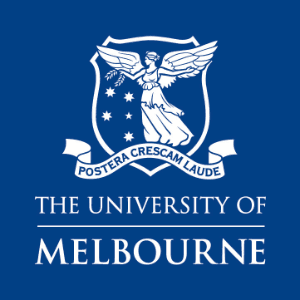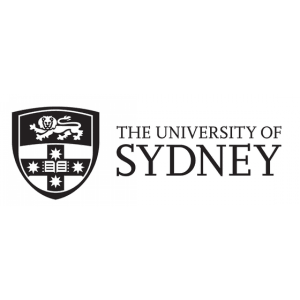Explore By
 Exams
Exams
 Countries
Countries
 Expenses
Expenses
 Universities
Universities
Studying in Australia for Indian students offers exceptional educational opportunities and a vibrant cultural experience. During the January-April 2024 period, Australia hosted 704,931 international students on student visas, reflecting a 20% increase from the previous year. The study in Australia, including tuition and living expenses, is manageable with various scholarships and financial aid options. According to the Indian Embassy in Canberra, India is the second-largest source country for study in Australia for Indian students.
Study in Australia is an excellent option for Indian students looking to study abroad. Each year, more than 600,000 international students apply for admissions to study in Australia. Additionally, Australia consistently creates over 64,000 new jobs every six to seven months, offering abundant opportunities for career advancement. Study in Australia for Indian students offers a diverse range of courses and excellent opportunities for cultural enrichment. Additionally, there are several benefits of studying in Australia mentioned below:
Top-Ranked Universities: Australia is home to 38 universities ranked in the QS World University Rankings 2024, with 9 of them securing places within the top 100 universities globally.
Part-Time Work Opportunities: International students in Australia can work up to 24 hours a week during their studies and unlimited hours during holidays. Graduates can also work in Australia for up to 4 years with a Post-Study Work Permit.
Attractive Salaries: Master's graduates can earn between USD 70,000 and 100,000 per year.
Internship: All 38 Australian universities offer internship and full-time job opportunities through their designated job portals, helping students transition smoothly from education to employment.
Research Opportunities: Australia ranks 9th globally in research output, offering students access to advanced facilities and collaborative projects.
Government Support: Benefit from AUD 245 million in annual scholarships, fellowships, grants, and bursaries for international students.
The admission process differs from university to university, but the following documents remain/general requirements remain a staple for admission to higher education in Australia.
Undergraduate Admission Requirements:
To apply for undergraduate programs at universities in Australia, you typically need a high school diploma or equivalent qualification. English proficiency is crucial, verified through tests like IELTS or TOEFL. Some courses may have specific subject prerequisites, and some programs may require entrance exams. To study in Australia for Indian students after 12th, ensuring you meet these requirements is essential.
Postgraduate Admission Requirements:
For admission to master's programs in Australia, international students may need to provide GRE, GMAT, or LSAT scores for law courses. Additionally, applicants might undergo interviews and submit extra documents or portfolios as part of the application process. For studying in Australia for Indian students, it's important to be aware of these requirements to ensure a smooth application process.
Intakes in Australia
Australia has three main intakes for study in Australia: the popular January/February (Semester 1) and July (Semester 2) intakes, which offer a wide range of courses, and the smaller November (Semester 3) intake with limited options. For 2024, the Australian government plans to halve migrant intake over the next two years by imposing stricter English test requirements for student visas.
February Intake (Semester 1):
Applications for the February intake open between October and November of the previous year, with a deadline in late May or early June. It offers all undergraduate and graduate courses, along with various scholarships and financial aid options for those pursuing study in Australia.
July Intake (Semester 2):
The July intake's application period is between April and May, with a deadline in November. It includes most undergraduate and graduate programs, though fewer scholarships are available.
November Intake:
The November intake is a minor entry option, with applications opening in September and deadlines from late November to January. It offers a limited selection of programs and fewer scholarships.
Proof of English proficiency (TOEFL/IELTS)
GMAT/GRE for postgraduate programs
Letters of recommendation
Statement of purpose
Academic transcripts
Copy of a valid passport
Australia has many world-renowned universities, making it a top choice for those looking to study in Australia. The University of Melbourne (#14) and Australian National University (#34) are among the top-ranked institutions in the QS World University Rankings 2024. Out of its 43 universities, 9 are ranked in the top 100 worldwide. The prestigious Group of Eight (Go8) includes the University of Melbourne, Australian National University, University of Sydney, University of Queensland, University of Western Australia, University of Adelaide, Monash University, and UNSW Sydney. Study in Australia for Indian students is enhanced by these exceptional educational opportunities.

University of Melbourne
Parkville, Victoria.
Know More

The University of Sydney
Camperdown, New South Wales
Know More

University of New South Wales
Kensington, New South Wales.
Know More
Australian universities offer top-ranked courses across 51 disciplines, including Engineering, Business, Arts & Humanities, Medicine, and Sciences. The cost of engineering courses can range from AUD 40,000 to AUD 50,000 per year. IT courses in Australia remain among the top 10 favorite courses for international students. Here are the top-ranking courses to study in Australia for Indian students.
When considering studying in Australia for Indian students, understanding the study in Australia cost is essential. The expenses include tuition fees, accommodation, living expenses, and other essential costs such as health insurance and travel. Tuition fees vary depending on the university and course of study.
Level of Education in Australia | Costs for Indian Students |
Undergraduate Bachelor Degree | INR 11.07 Lakhs - 24.90 Lakhs |
Postgraduate Master’s Degree | INR 12.18 Lakhs - 27.68 Lakhs |
Doctoral Degree | INR 9.96 Lakhs - 23.25 Lakhs |
Top Courses fee in Australia
Course Name | Average Fee |
MS | From ₹ 4 L to ₹ 2 Cr |
MBA/PGDM | From ₹ 5 L to ₹ 78 L |
B.E. / B.Tech | From ₹ 7 L to ₹ 97 L |
MIM | From ₹ 5 L to ₹ 2 Cr |
Monthly Living Expense
In addition to tuition fees, international students must manage living expenses while they study in Australia. A key advantage of studying in Australia is the high standard of living at a reasonable cost. The estimated monthly cost of living for a student in Australia is around ₹1.2 lakhs, covering education, transportation, healthcare, and more. A breakdown of typical monthly expenses is provided below.
Expenses | Average Cost |
Rent | INR 42,277 |
Food and Groceries | INR 16,910 |
Transportation | INR 8,286 |
Entertainment | INR 11,273 |
Utility | INR 17,136 |
Top Cities to Study in Australia
Australia is home to several vibrant cities that attract international students with their high-quality education and diverse cultures. For those interested in study in Australia for Indian students, each city offers unique opportunities and amenities that cater specifically to their needs. Here’s a brief look at the top cities preferred by students to study in Austrailia.
Australian Cities | QS Best Study City Rankings 2024 |
Melbourne | #4 |
Sydney | #7 |
Brisbane | #22 |
Adelaide | #26 |
Perth | #34 |
Canberra | #30 |
Recent Blogs
Australia offers many scholarships for international students studying there, with over 120,000 available each year. The Australian government spends about $245 million annually on scholarships, fellowships, grants, and bursaries to support international students to study in Australia. For those looking into study in Australia for Indian students, these financial aids provide valuable opportunities to make their educational journey more affordable. Here is a list of scholarships :
Scholarship Name | Description | Coverage |
Australia Awards Scholarship | Funded by the Australian government, it targets students from Asia, the Pacific, the Middle East, and Africa. | Full tuition, living expenses, and allowances |
Destination Australia Scholarship | Aims to support both domestic and international students studying in regional Australia. | Varies; often includes tuition and living expenses |
Endeavour Scholarships and Fellowships | Supports postgraduate study, research, and professional development in Australia. | Comprehensive funding, including travel and establishment allowances |
VU International Excellence Scholarship | Offered by Victoria University for outstanding academic performance. | Up to ₹6 lakhs towards tuition fees |
Swinburne International Excellence Scholarships | Provided by Swinburne University based on academic merit. | Up to 75% of tuition fees |
Deakin Vice-Chancellor’s International Scholarship | Open to all prospective international students at Deakin University with high academic achievement. | Up to 100% of tuition fees and participation in the VCPEP |
University of Newcastle Academic Excellence Scholarships | Awarded based on academic excellence during undergraduate studies. | ₹5 lakhs for progressing students |
Apart from the scholarships mentioned above, various university-specific scholarships are available for international students to study in Australia.
Recent Blogs
When considering study in Australia for Indian students, the cost of living is an important factor. On average, the monthly living expenses in Australia amount to around AUD 21,000, which is separate from tuition fees. Additionally, a notable aspect is that Australian universities generally offer few housing options for international students. However, some universities do provide on-campus accommodation. It is advisable to reach out to your chosen institution to inquire about the accommodation options they offer.
On-campus accommodation to study in Australia:
For students considering study in Australia, on-campus accommodations are operated and maintained by the university exclusively for students. These fully furnished accommodations typically include utilities like electricity and water in the rent. Students interested in on-campus housing should apply well in advance.
Cost: AUD 800 to AUD 1400.
Off-campus Accommodation to study in Australia:
Homestay: Considered one of the safest types of accommodation, where students will be living with Australian families right in their homes.
Valuable cultural experience
A fully furnished room
Properly arranged meals
AUD 1000 to AUD 1400 per month
Private Rentals: Type of accommodation not connected to the university. Many students in Australia choose to share the cost of a rental property with several housemates.
Offers a lot more independence than other accommodations.
Will help students to become self-sufficient and responsible
Students would have to look after household chores like cleaning, groceries, paying bills etc.
AUD 600 to AUD 1200 per month
Types of Accommodations in Australia | Monthly Living Expenses in Australia |
On-campus dormitory | AUD 800 - AUD 1,400 |
Shared apartment | AUD 600 - AUD 1,200 |
Homestay | AUD 1,000 - AUD 1,400 |
International students wanting to study in Australia need to get a Student Visa. The type of visa depends on how long their course is. Australian universities usually suggest using the Simplified Student Visa Framework (SSVF). Once accepted and given a Confirmation of Enrolment (CoE), students should apply online for a subclass 500 visa if they’re doing an undergraduate course or a subclass 485 visa if they’re doing a graduate course.
Subclass 500 Visa: Student Visa
For Indian students considering study in Australia, the cost of the visa is AUD 710 (approx. INR 39,705). This visa allows international students to stay in Australia for up to five years, depending on the length of their course enrollment. It provides part-time work rights of up to 40 hours per fortnight during the academic term and full-time work during breaks.
Subclass 485 Visa: Temporary Graduate Visa
The cost is AUD 1,895 (approx. INR 1,05,971). This visa permits recent graduates to stay in Australia for between two to four years, depending on their qualification level and stream. It grants full-time work rights, enabling graduates to gain work experience and explore pathways to permanent residency after their study in Australia.
Australia has a high employment rate due to the low density of its population; hence it provides a range of working options. International students can work while completing their studies and supplement some of the attendance costs of the university.
Part-Time Work in Australia:
If you choose to study in Australia, you can work while you’re on a student visa. With a subclass 500 visa, you can work up to 48 hours every two weeks during your study period and unlimited hours during breaks. On average, you might earn around AUD 23 per hour in part-time jobs across sectors like hospitality, construction, and sales. This helps cover living costs and gain practical experience.
Post study work permit in Australia:
After you study in Australia, you can stay and work through the post-study work stream. This visa lets you live and work in Australia for 2 to 4 years if you’ve completed a CRICOS-registered course. You can also bring your immediate family. Alternatively, the graduate work stream visa allows 18 months of work for those with qualifications related to occupations on Australia’s skilled occupation list. To qualify for the post-study work (PSW) visa in Australia, applicants must:
Be under 50 years old.
Have received their first student visa on or after 5 November 2011.
Have held a student visa within the last six months.
Here are some in-demand jobs in Australia:
Early and secondary education teachers
Architects and designers
Civil engineers and construction specialists
Miners
Healthcare professionals
Financial experts
Nurses
Leading Companies in Australia
Google Australia | Allens | Coles |
Deloitte Australia | Optiver | Microsoft |
BHP | Australian Security Intelligence Organisation (ASIO) | AMP |
Recent Blogs
Ques.1: How will studying in Australia benefit my future?
Answer: Studying in Australia benefits your future with high-quality education at globally reputed institutions, including nine universities ranked in the top 100 worldwide. By choosing to study in Australia, you’ll enhance your cross-cultural understanding and gain practical experience through work opportunities. Additionally, the Government of Australia invests AUD 245 million annually in scholarships and grants for international students, further supporting your education.
Ques.2: Is studying in Australia expensive?
Answer: Studying in Australia involves significant costs, with tuition fees ranging from AUD 20,000 to AUD 50,000 per year. Living expenses for those who study in Australia are estimated at AUD 1,400 to AUD 2,500 per month. Despite these expenses, the investment is worthwhile due to the high-quality education offered. Scholarships and part-time work opportunities can help to reduce these costs.
Ques.3: What to study in Australia to get a job?
Answer: If you’re considering studying in Australia to enhance your job prospects, here are some high-demand fields and courses you might want to explore:
Agriculture, Environmental and Related Studies
Computer Science and Information Technology
Management and Commerce
Health
Food, Hospitality, and Personal Services
Teachers - early and secondary education
Ques.4. Which intake is available for Australia in 2024?
Answer: For students planning to study in Australia in 2024, the available intakes are:
February Intake (Semester 1): Starts in February, with applications typically open from October to November 2023, and deadlines in late May or early June 2024.
July Intake (Semester 2): Begins in July, with applications generally from April to May 2024, and deadlines in November 2024.
November Intake (Semester 3): Starts in November, with applications usually in September 2024, and deadlines from late November to January 2025.
Ques.5: Is there a student visa for Australia in 2024?
Answer: Yes, in 2024, international students can apply for a student visa to study in Australia. The Subclass 500 visa allows you to study full-time at an Australian educational institution for both undergraduate and graduate courses. However, starting July 1, 2024, holders of certain visas, such as Visitor, Temporary Graduate, and Maritime Crew visas, will not be able to apply for a Student visa while they are still in Australia.
Ques.6: What is the cheapest university in Australia for international students in 2024?
Answer: In 2024, some of the cheapest universities for international students planning to study in Australia are Federation University Australia, with tuition fees ranging from AUD 18,000 to AUD 25,000 per year; the University of Southern Queensland, with fees around AUD 22,500 per year; and the University of the Sunshine Coast, with fees between AUD 20,000 and AUD 30,000 per year.
Ques.7: Why study in Australia in 2024?
Answer: Studying in Australia in 2024 provides access to world-class education, vibrant cultural experiences, and ample work and post-study opportunities. With its supportive academic environment and stunning landscapes, studying in Australia offers a unique and enriching experience for international students.
In Australia, international students get the option of working part-time. At the same time, they study in Australia, thus getting hands-on work experience so that students can connect to professional networks and work after completing their studies. Many people who have a degree from Australia seek employment in areas that resonate with their degree. The most common fields are education, science, business, healthcare, engineering, and law.
Even with the high living standards, the cost of living in Australia is considerably lower than other options like the USA or UK. Tuition fees at Australian universities vary substantially depending on where to study, what you study, and the level you will be studying at.
List of some affordable universities in Australia
University of Wollongong
University of New England
University of Victoria
The Government of Australia spends 200 million dollars annually to provide scholarships, fellowships, grants, and bursaries to international students, and various university-specific scholarships are available for international students.
Because Australia allows international students to work on their student visa (subclass 500), every student should try to seek this golden opportunity and kick-start their careers in Australia itself.
If your end goal is to settle in Australia, then it's better to pursue programs that are in demand in Australia.
Computer Science and Information Technology
Agriculture, Environmental and Related Studies
Management and Commerce
Health
Food, Hospitality, and Personal Services
Related Blogs
TOEFL
English language proficiency test
PTE
The computer-based English test
SAT
Standardized test administered by College Board
GRE
Admission test for graduates
GMAT
Test for Business and Management Programs
Confused which university to choose?
Use our recommendation engine to analyze your profile and recommend the most desirable programs that fit you.
Get Recommendation